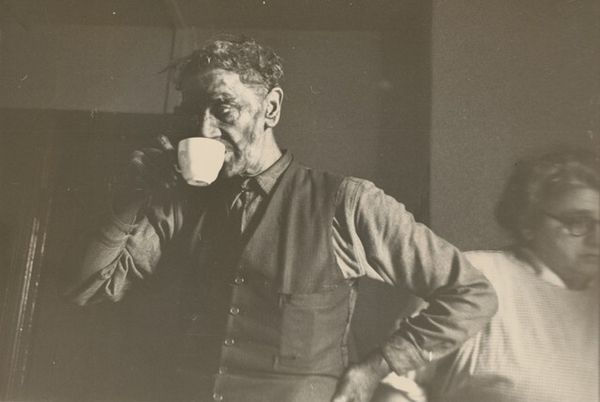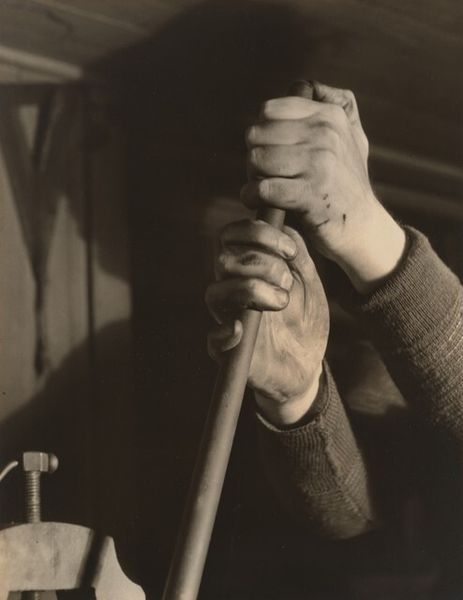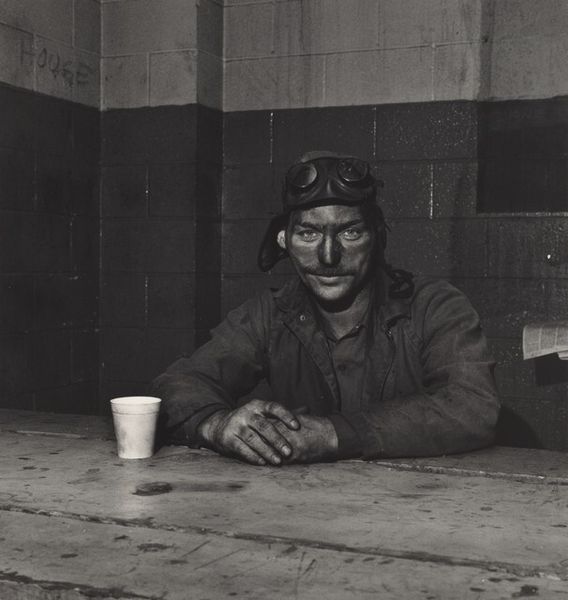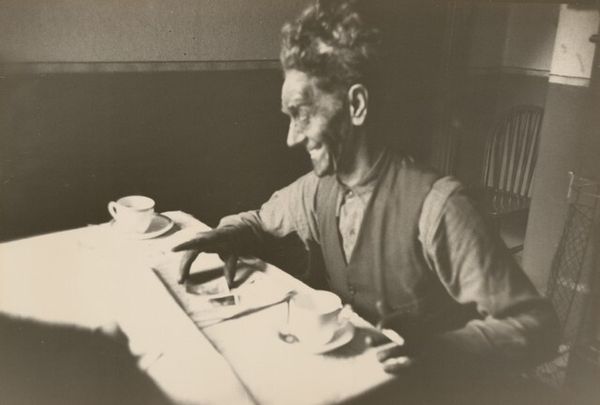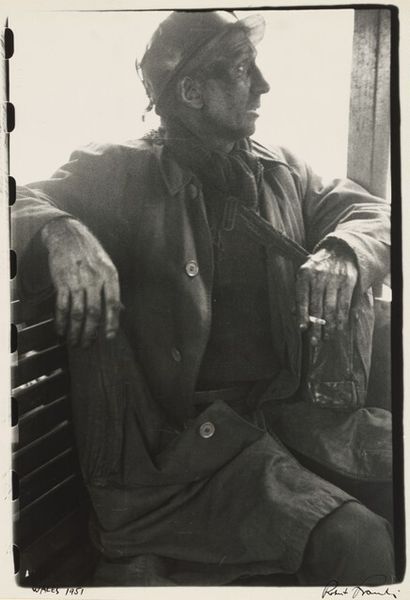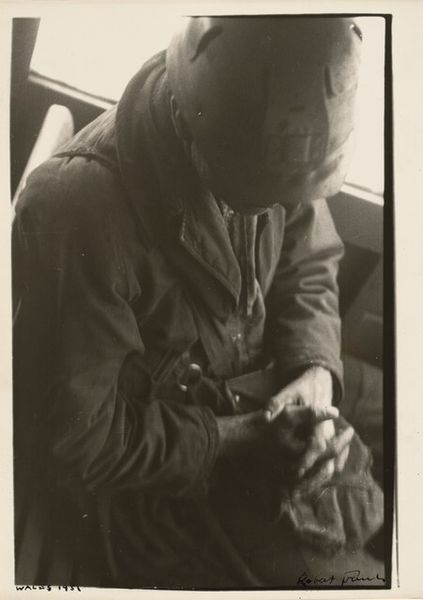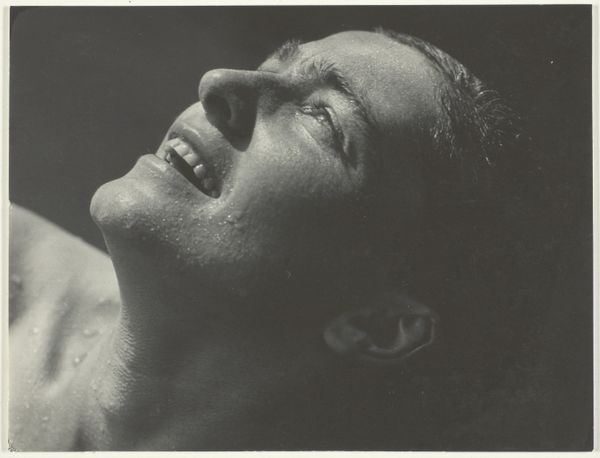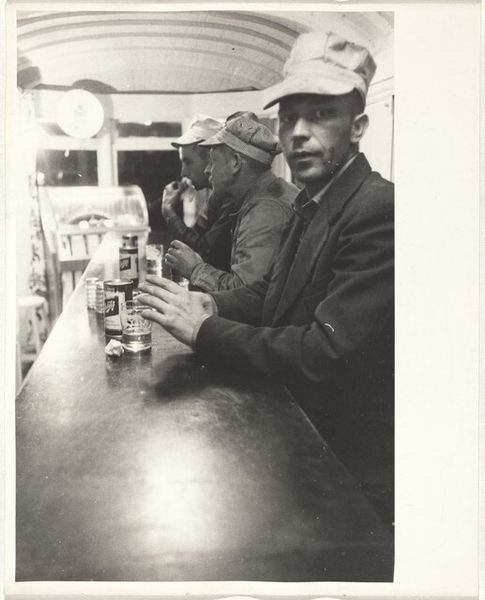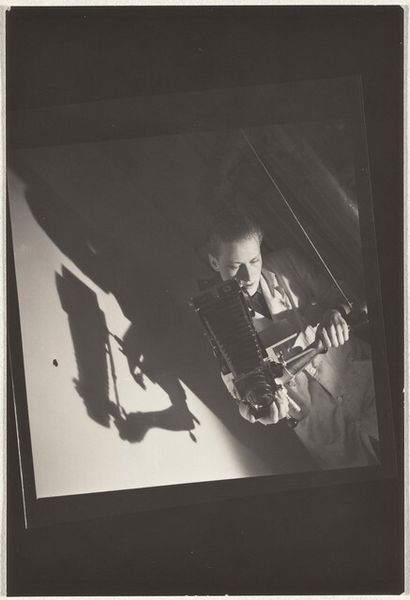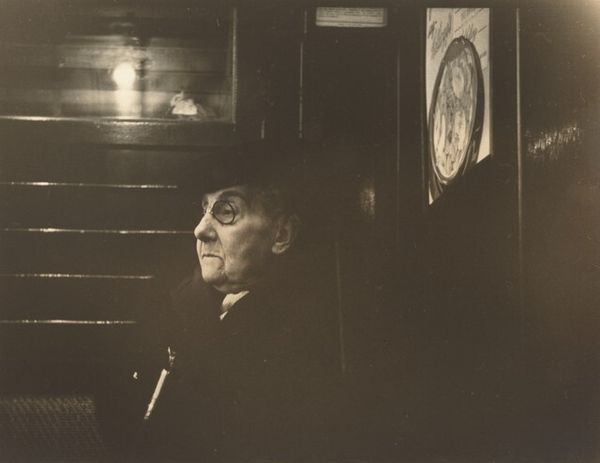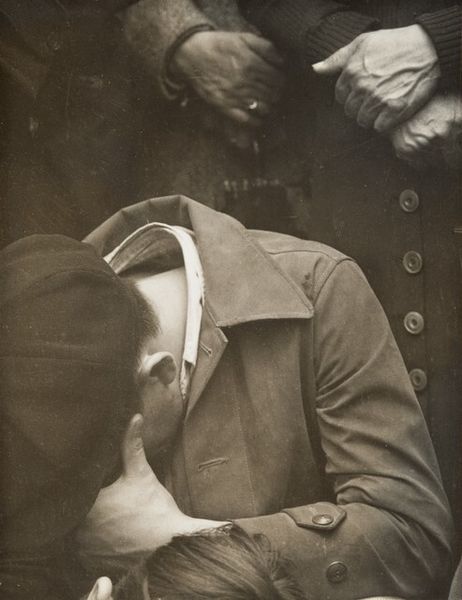
photography, gelatin-silver-print
#
portrait
#
street-photography
#
photography
#
gelatin-silver-print
#
monochrome photography
#
pop-art
#
monochrome
#
modernism
#
realism
#
monochrome
Dimensions: image: 23.1 × 34.2 cm (9 1/8 × 13 7/16 in.)
Copyright: National Gallery of Art: CC0 1.0
Curator: Ah, yes, Robert Frank’s “Wales, Ben James,” taken in 1953. A gelatin silver print. Stark, isn’t it? Editor: There's a quiet fatigue hanging in the air, the way the shadows cling to the man's face, as if even light can't penetrate the weight of whatever he’s carrying. It’s intensely human, but also vulnerable in a very real, immediate way. Curator: Absolutely. Frank was all about capturing the raw, unvarnished truth of post-war America, even when that truth was hard to look at. You see it here – a working man, a simple act of drinking. Editor: That mug, though. The object is so mundane and contrasts beautifully against his well-worn, weathered skin. One almost asks about its making; was it slip-cast for uniformity, or wheel-thrown with loving care? Was its origin a factory floor, mass-producing thousands for distribution, or did it pass hands to acquire its own sense of personality and presence, like a cherished object? It's a plain object imbued with unspoken stories. Curator: Precisely. He wasn’t interested in heroic depictions. More like revealing the everyday dignity in what others might overlook. It almost feels like a silent prayer. Editor: Gelatin silver too... It speaks of its own history in a way! That it allowed Frank the ability to travel with relative ease and capture so much, such immediate portraits is significant when you think of how photographic portraiture has been reserved for nobility and the upper-crust! Its industrial quality makes me wonder how many of these existed at one point, where these photos now hang, and the environmental effects in creating this material as well as ensuring its existence! Curator: The monochrome rendering definitely adds to the mood. There's a certain timelessness about it. A moment suspended. What do you take away from it as a whole? Editor: In considering art, it feels impossible to remove questions about how and why and by who they are made, right? Overall though? It is the quiet that echoes longest in my mind – a monument to unseen labour, each one crafted under duress. It leaves me thinking about material legacy as well as social struggles captured. Curator: And for me, it’s that shared moment of recognition—that connection we feel across time and circumstance. Frank nailed it—the power in seeing yourself in another.
Comments
No comments
Be the first to comment and join the conversation on the ultimate creative platform.
